Ferns have a reputation as invasive plants that spread aggressively through the yard, but this reputation is not really deserved. In fact, only a few fern species spread through the soil – most are well behaved and simply grow in place. So, how can you tell the difference? Is there a way to tell whether a particular fern will spread or not?
Ferns that grow as a solitary crown, will not spread from their planting location. New fronds emerge from a closely packed cluster that will grow bigger with time but remain as a single clump. Only a few fern species have “creeping rhizomes,” which are runners that spread through the soil and invade the surrounding area. All ferns have the potential to spread spores through the wind, which can establish new plants if they successfully land and germinate elsewhere in the garden.
All ferns grow from rhizomes that lie beneath the soil, sending roots down to secure moisture and nutrients, and fronds up to gather (dappled) sunlight.
For some fern species, these rhizomes form clumps that are closely packed into a crown (or caudex). The fronds emerge upwards from this tightly packed base, forming a vase-like structure that forms the classic fern “shuttlecock” shape. These varieties don’t spread, and so can be planted with the confidence that they will stay put and not invade the surrounding landscape.
The next class of ferns also grow as crowns, but can slowly spread outwards to form a local colony of neighbouring crowns. This results when the rhizomes begin to project “stolons” into the surrounding soil and establish new crowns. Usually, this process takes years and is easy to managed by digging out the new growth, if you want to prevent the spread.
Finally, some ferns spread rapidly along creeping rhizomes, which spread in all directions. These are the aggressive varieties that dominate in natural environments and give all ferns a bad name.
Unfortunately, it isn’t simple to classify ferns into groups that do and don’t spread just from the genus, so it always pays to check for any specific variety that you are thinking of introducing to your garden.
Ferns that do not spread
It would be very time consuming to list all the crown-forming ferns, but here are a few of the most popular varieties that can safely be planted in the knowledge that they will stay put.
First up are the Dryopteris species ferns, which have the classic crown pattern of growth:
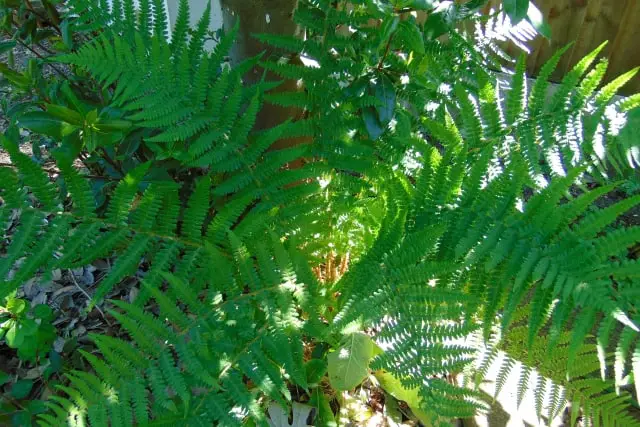
Male fern
- Dryopteris filix-mas
- Deciduous
- Prefers partial or full shade
- Height: up to 1.5 m
- Soil: acid, neutral or alkaline. Moist, poor drainage tolerated.
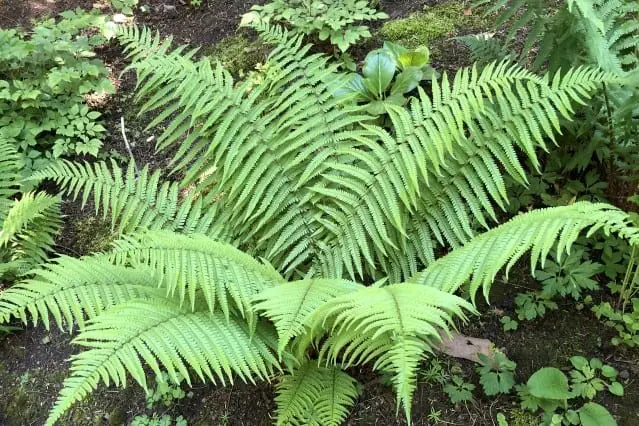
King fern
- Dryopteris affinis
- Semi-evergreen
- Shade, partial or full sun
- Height: up to 1.5 m
- Soil: acid, neutral or alkaline. Moist, well-drained.
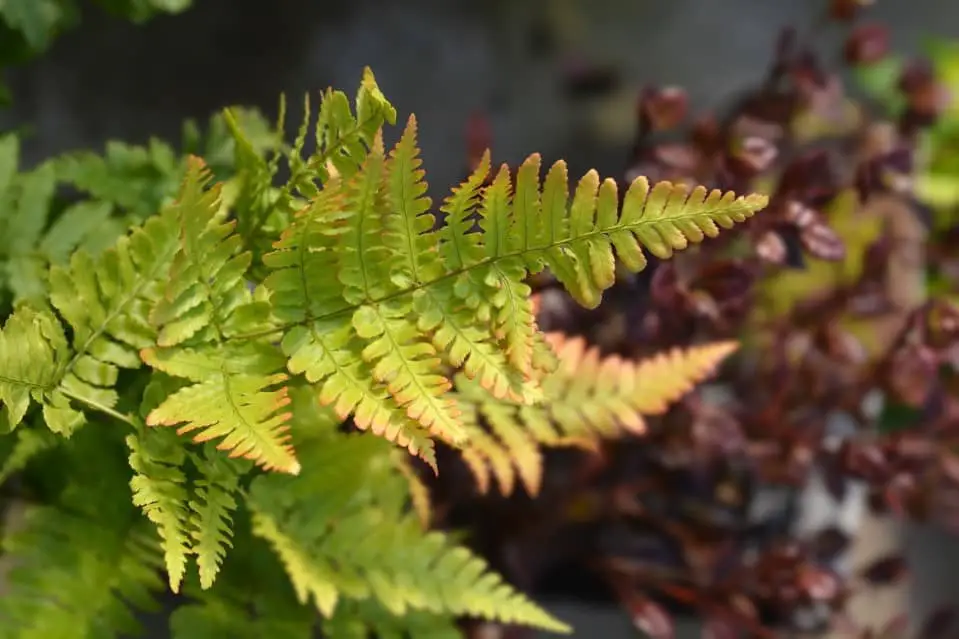
Autumn fern
- Dryopteris erythrosora
- Semi-evergreen
- Full or partial shade, and full sun
- Height: up to 1 m
- Soil: tolerant of most pH and drainage conditions.
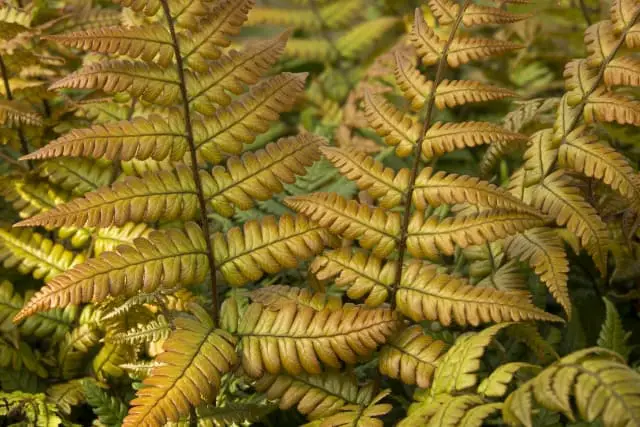
Sunset fern
- Dryopteris lepidopoda
- Semi-evergreen
- Full or partial shade
- Height: up to 1 m
- Soil: acid or neutral. Moist, well-drained.
Another perennial favorite, noted for the beauty of their fronds are the numerous varieties and cultivars of the Japanese painted fern.
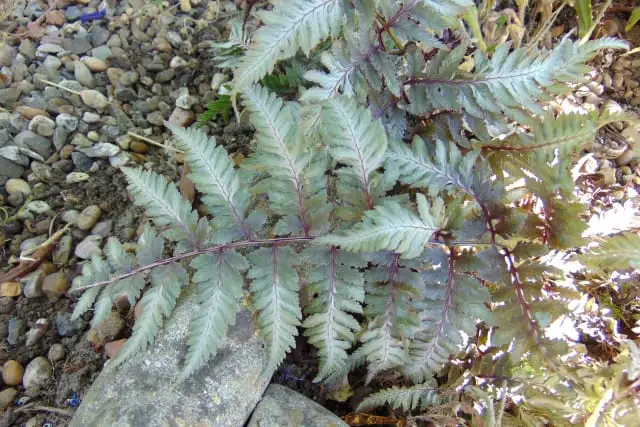
Japanese painted fern
- Athyrium niponicum
- Deciduous
- Prefers partial shade
- Height: up to 0.5 m
- Soil: acid, neutral or alkaline. Moist, well-drained.
Many varieties of Polystichum species ferns also grow well in single crowns, and can be planted with confidence that they won’t spread.
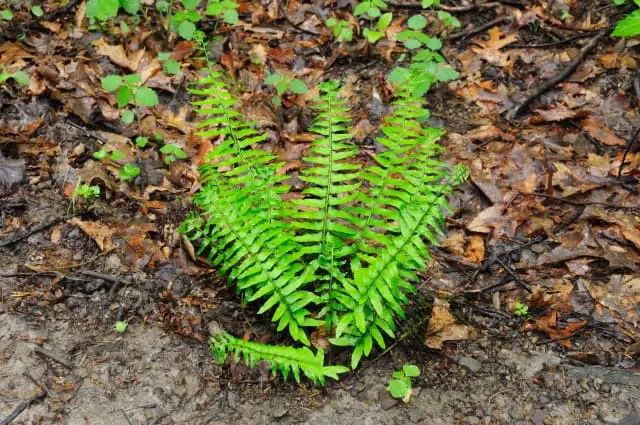
Christmas fern
- Polystichum acrostichoides
- Evergreen
- Partial shade
- Height: up to 1 m
- Soil: acid, neutral or alkaline. Moist, well-drained.
Chain ferns (Woodwardia sp.) are another well-behaved variety, and although less common, are impressive and attractive specimens.

Oriental chain fern
- Woodwardia orientalis
- Evergreen
- Prefers partial shade
- Height: up to 1.5 m
- Soil: acid or neutral. Moist, tolerates poor drainage.
Ferns that can spread slowly
The second class of ferns, which form clumps of daughter plants in a close-knit colony over time, come from a wide range of fern species.
The Lady fern (Athyrium filix-femina), has this slow spreading habit despite being closely related to the Japanese painted fern.
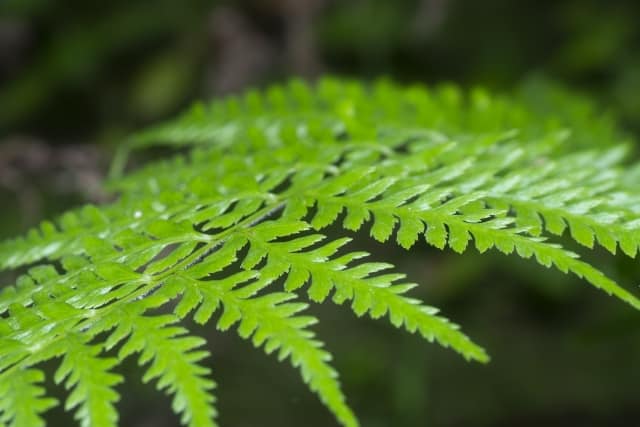
Lady fern
- Athyrium filix-femina
- Deciduous
- Prefers partial or full shade
- Height: up to 1 m
- Soil: acid or neutral. Moist, poor drainage tolerated.
Another popular garden variety that spreads slowly is the Southern shield fern (Thelypteris kunthii), which despite the common name should not be confused with the Polystichum species ferns.
The ever-popular Maidenhair fern (Adiantum raddianum) is usually grown as a houseplant, but where it does grow naturally in the wild (and in agreeable plots in yards and gardens), it has a slowly-spreading habit.
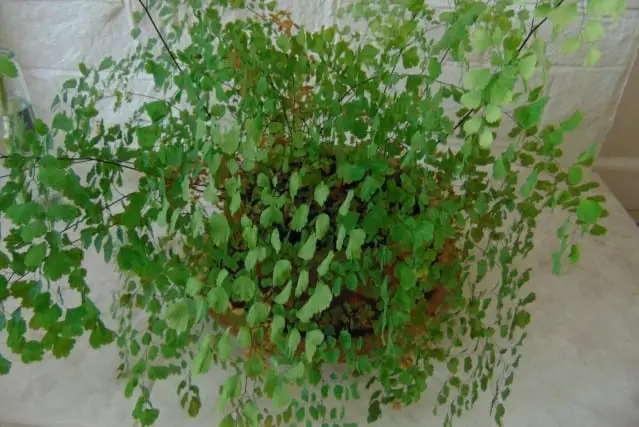
Maidenhair fern
- Adiantum raddianum
- Evergreen
- Partial shade
- Height: up to 0.5 m
- Soil: neutral or alkaline. Moist, well-drained.
The Polypodium species ferns are also good, but slow, spreaders. Common polypody will roam over rocks and surfaces, growing in an epiphytic fashion rather than by invading through the soil.
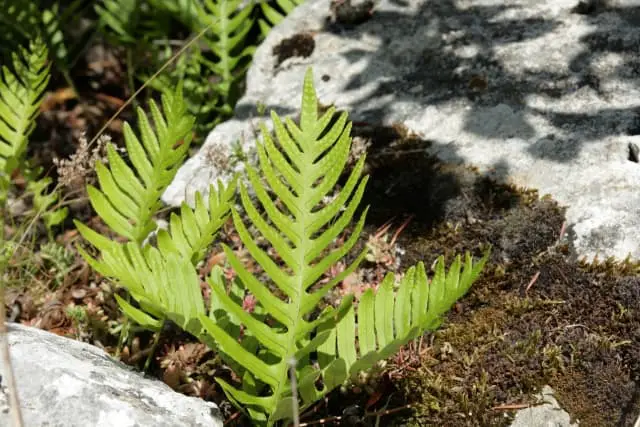
Common polypody
- Polypodium vulgare
- Evergreen
- Partial shade or full sun
- Height: up to 0.5 m
- Soil: Neutral or alkaline. Moist, well-drained.
Finally, the Ostrich or Shuttlecock fern (Matteuccia struthiopteris) is one of the more vigorous examples of a fern that can form a colony of neighbouring crowns. The rhizomes project “stolons” that run along the surface of the soil and then establish new base roots from which another crown appears.
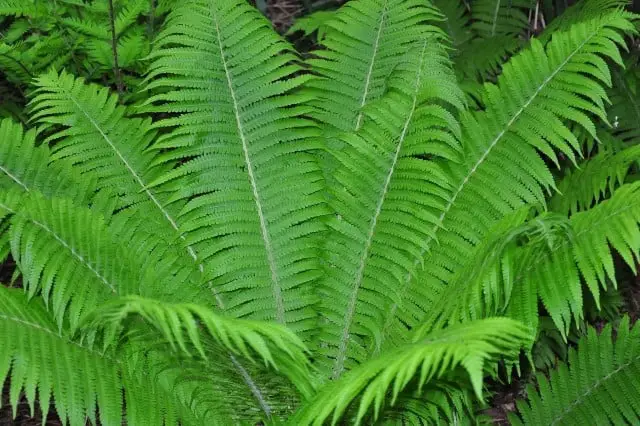
Ostrich fern
- Matteuccia struthiopteris
- Deciduous
- Full or partial shade
- Height: up to 1.5 m
- Soil: acid or neutral. Moist, well-drained.
For all these slow spreading examples, management is generally easy and essentially just a job of trivial weeding to remove any new crowns that are not desired.
Ferns that spread aggressively
The third class of fern that really do spread aggressively are those with creeping rhizomes that grow rapidly in all directions.
The two most invasive ferns that fall in this class are the Hay-scented fern and Bracken fern.

Hay-scented fern
- Dennstaedtia punctilobula
- Deciduous
- Full or partial shade
- Height: up to 1 m
- Soil: acid or neutral. Moist, well-drained, and tolerates dry soil.
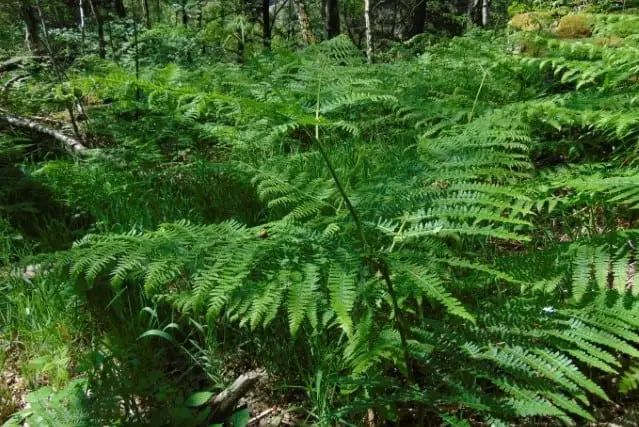
Common bracken
- Pteridium aquilinum
- Deciduous
- Prefers partial shade or full sun
- Height: up to 1 m
- Soil: acid, neutral or alkaline. Moist, well-drained.
New fronds can emerge all the way along the rhizome, leading to rapid and dense expansion of the plants. Unless your yard is very substantial and you need a lot of ground cover, these two species are best avoided.
Other ferns that also have a rapidly spreading habit are the New York fern (Thelypteris noveboracensis) and the Marsh fern (Thelypteris palustris).

Marsh fern
- Thelypteris palustris
- Deciduous
- Partial or full shade
- Height: up to 1 m
- Soil: acid or neutral. Moist, tolerates poor drainage.
Though not as aggressive as Bracken or Hay-scented fern, these varieties do need to be managed carefully.
Spreading by spores
So far we have only considered the physical expansion of an individual fern plant from its root stock, but another major mechanism for spread is through dispersal of spores.
Ferns do not produce flowers, and instead release spores that are dispersed by the wind, on animal fur, or in water courses. Most ferns form “sporangia” arranged in “sori” on the underside (or occasionally, as with the chain ferns, on the top) of the frond, which are small structures in which the spores develop.

After sporangia rupture, the spores are dispersed and spread through the environment. Unlike the seeds of flowering plants, spores are not fertilized before release, and need to land on a moist surface on which the process of fertilization can take place.
What this means in practice is that new ferns can suddenly pop up in unexpected places. If spores can find a good spot to be fertilized and germinate, then a new plant will be established. Basically, ferns can spread like any other weed.
Which species of ferns are most able to spread through spore dispersal will depend on your location, as native varieties are the most likely to find a new niche that suits them well. Where I live in the UK, Male ferns and Hart’s tongue ferns seem to be very successful at spreading far and wide, despite both having a crown-forming habit.
The only solution to this form of spreading is to dig up any unwanted new arrivals.
Many ferns do not spread aggressively, and there is a huge range of choice from the crown-forming varieties that grow in place and only spread by dispersal of spores. Slow spreading varieties are also usually easy to manage, and only the Hay-scented and Bracken ferns should be particularly avoided.
